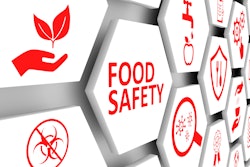
The surge in e-commerce has amplified the critical role of last-mile delivery, yet this final stage of the supply chain presents significant environmental challenges.
Here’s a breakdown of the impact of fossil fuel reliance, inefficient routing, and traffic congestion; the strategies and technologies aimed at fostering sustainability, including the adoption of electric vehicles and alternative fuels, the utilization of micromobility solutions like cargo bikes, and the potential of drones and autonomous vehicles; and the importance of optimizing delivery routes and logistics through technology.
The significant carbon footprint of last-mile delivery
The environmental impact of last-mile delivery is considerable. Statistics reveal that this final leg of the journey can account for approximately 30% of the carbon dioxide emissions within the entire logistics sector. In some estimations, the last mile can be responsible for up to half of all carbon dioxide emissions generated by delivery vehicles.
To illustrate the scale of this impact, in the United States alone, last-mile delivery produced 41 million tons of CO₂ in 2020. Projections indicate a worrying trend, with urban last-mile delivery emissions expected to climb by over 30% in the Top 100 cities globally by the year 2030 if current practices persist.
Strategies for sustainable last-mile delivery
To mitigate these environmental challenges and foster a more sustainable approach to last-mile delivery, a multitude of strategies and technologies are being explored and implemented.
Transitioning to electric vehicles and alternative fuels. One of the most promising avenues for reducing the carbon footprint of last-mile delivery is the widespread adoption of electric vehicles (EVs), which offer the significant advantage of producing zero tailpipe emissions, making them a much cleaner alternative to traditional combustion engine vehicles. Beyond the environmental benefits, EVs also boast lower operating and maintenance costs due to fewer moving parts and reduced fuel expenses. The quieter operation of EVs contributes to a reduction in noise pollution, particularly beneficial in densely populated urban environments. Major companies are increasingly investing in electric delivery fleets, signaling a growing industry-wide shift. This transition is further supported by government incentives and regulations aimed at promoting the adoption of electric vehicles through subsidies and tax breaks.
Utilizing micromobility solutions. Micromobility solutions, such as cargo bikes and e-bikes, are emerging as highly effective and sustainable options for last-mile delivery, especially in urban environments. These solutions offer the distinct advantage of being able to navigate traffic congestion with ease, often utilizing bike lanes and pedestrian areas inaccessible to larger vehicles. They produce significantly reduced or zero emissions, contributing to cleaner air and quieter cities. The operating costs associated with cargo bikes and e-bikes are also considerably lower compared to vans and trucks. Studies suggest that cargo bikes have the potential to replace over half of the urban van deliveries, often achieving faster delivery times in congested city centers.
Exploring drones and autonomous vehicles. The future of sustainable last-mile delivery may also include the widespread use of drones. Drones offer the potential for rapid delivery, especially in reaching remote or difficult-to-access areas. They can significantly reduce emissions compared to traditional vehicles. Autonomous ground vehicles, particularly electric models, can contribute to lower emissions and reduce labor costs.
Optimizing delivery routes and logistics with technology. Leveraging technology to optimize delivery routes and logistics is another crucial strategy for improving sustainability. Route optimization software utilizes artificial intelligence and advanced algorithms to determine the most efficient delivery routes, minimizing travel distance and fuel consumption. Real-time tracking and dynamic route adjustments further enhance efficiency by allowing for on-the-fly changes based on traffic conditions or unexpected delays. Predictive analytics can be employed to forecast demand and optimize resource allocation, leading to better planning and fewer unnecessary trips.
Implementing micro-consolidation centers and urban hubs. Implementing micro-consolidation centers and urban hubs represents another promising strategy for reducing the environmental impact of last-mile delivery. By establishing smaller distribution points closer to customers in urban areas, the distance required for the final delivery leg is significantly reduced. These hubs can also facilitate the use of more sustainable delivery modes like cargo bikes and electric vans.
Promoting out-of-home delivery networks. Promoting out-of-home (OOH) delivery networks, such as parcel lockers and pick-up and drop-off (PUDO) points, offers a significant opportunity to consolidate deliveries and reduce the overall carbon footprint. By delivering multiple parcels to a single, secure location, the number of individual home deliveries is drastically reduced, leading to lower emissions. OOH delivery also minimizes failed delivery attempts as customers can retrieve their packages at their convenience.
Focusing on sustainable packaging solutions. Finally, focusing on sustainable packaging solutions is a critical component of a greener last-mile delivery system. Utilizing recyclable, biodegradable, or reusable packaging materials reduces waste and minimizes the environmental impact associated with packaging production and disposal. Optimizing packaging size to reduce material usage and transportation volume not only minimizes waste but also allows for more efficient utilization of delivery vehicle space.
Challenges and barriers to sustainable adoption
Despite the numerous strategies and technological advancements available, the widespread adoption of sustainable practices in last-mile delivery faces several challenges and barriers. The high initial investment costs associated with transitioning to electric vehicle fleets can be a significant deterrent. The limited availability of charging infrastructure for EVs remains a key concern.
The role of collaboration between businesses and consumers
Improving sustainability and reducing the carbon footprint of last-mile delivery requires a collaborative effort involving businesses and consumers. Businesses have a vital role to play by investing in sustainable fleets and technologies. Consumers, on the other hand, can contribute by making conscious choices such as opting for slower delivery options when possible.
Conclusion: Toward a greener last mile
In conclusion, transitioning to sustainable last-mile delivery is not merely an environmental aspiration but a pressing necessity. The strategies and technologies outlined offer viable pathways toward reducing the carbon footprint of this critical logistics stage. However, overcoming the inherent challenges requires a concerted and collaborative effort from all stakeholders.




















